An Introduction to Chinese Street Food Posted by sasha on Nov 25, 2020 in Culture, Vocabulary
We love talking about Chinese food on the Chinese blog, and for good reason. Chinese cuisine is one of the most famous around the world and it’s definitely one of the most delicious! I recently described my perfect day of Chinese food, but I forgot one important thing – street food (街头食品 jiē tóu shí pǐn). Today I’ll give you an introduction to Chinese street food. Warning – these photos may cause you to drool on your keyboard!
As an American living in China, people would always ask me if I missed good ole’ American food. Truth be told, you can find tons of great Western food in Beijing. Things like hamburgers (汉堡包 hàn bǎo bāo) and pizza (比萨 bǐ sà) are readily available at fine dining establishments in the Chinese capital.
Actually, I found myself missing Chinese food when I was back home in the States far more, especially street food. Sure, you can find hot dogs, pretzels, and other snacks in big American cities like New York and Chicago, but these usually close down early.
Leaving the bar at 2 AM (another area where I miss being in China, by the way… seriously, who does last call and closes at 2?), I’m always disappointed to not find multiple vendors cooking up tasty morsels that will fill my belly and help alleviate at least some of the next day’s hangover (宿醉 sù zuì).
In Beijing and most other big Chinese cities, you don’t have to go far to find something yummy being cooked up. Street food is everywhere and it tends to stick around late into the night. While some people cringe at the thought of eating in the street in China, I personally love it. It’s delicious and cheap (又好吃又便宜 yòu hǎo chī yòu pián yí) and much better than a comparable meal at a Western fast food joint.
It’s always good to eat where the locals go, and in China that means pulling up a stool at a hole-in-the-wall street food stand. Sure, that meat on a stick may be a bit questionable, but after it’s grilled up and smothered in spices, you’ll forget any doubts you had. If you’re not licking your lips yet, here are some pictures of the various delicacies you can find in Chinese streets:
That last one may be a little gross, but don’t freak out just yet – these are only sold in night markets like Wangfujing (王府井 wáng fǔ jǐng) and are mostly there for shock value. If you do want to eat a stick of scorpions, however, they really are not that bad. Of course, you don’t have to be that adventurous. Simply grab some noodles, a kebab or two, and a tasty Chinese style street sandwich. Your wallet and your stomach will thank you!
If you’re curious to see some more Chinese street food, check out this short video. It includes several of the dishes I’ve mentioned plus a few others such as steamed stuffed buns (包子 bāo zi) and yummy egg pancakes (鸡蛋灌饼 jī dàn guàn bǐng):
Mmmm… my mouth is watering just thinking about all that delicious street food. How about you? Have you ever tried Chinese street food? I’d love to hear your answer to this question…
你喜欢吃什么街头食品?
nǐ xǐ huān chī shén me jiē tóu shí pǐn
What street food do you like to eat?

Build vocabulary, practice pronunciation, and more with Transparent Language Online. Available anytime, anywhere, on any device.




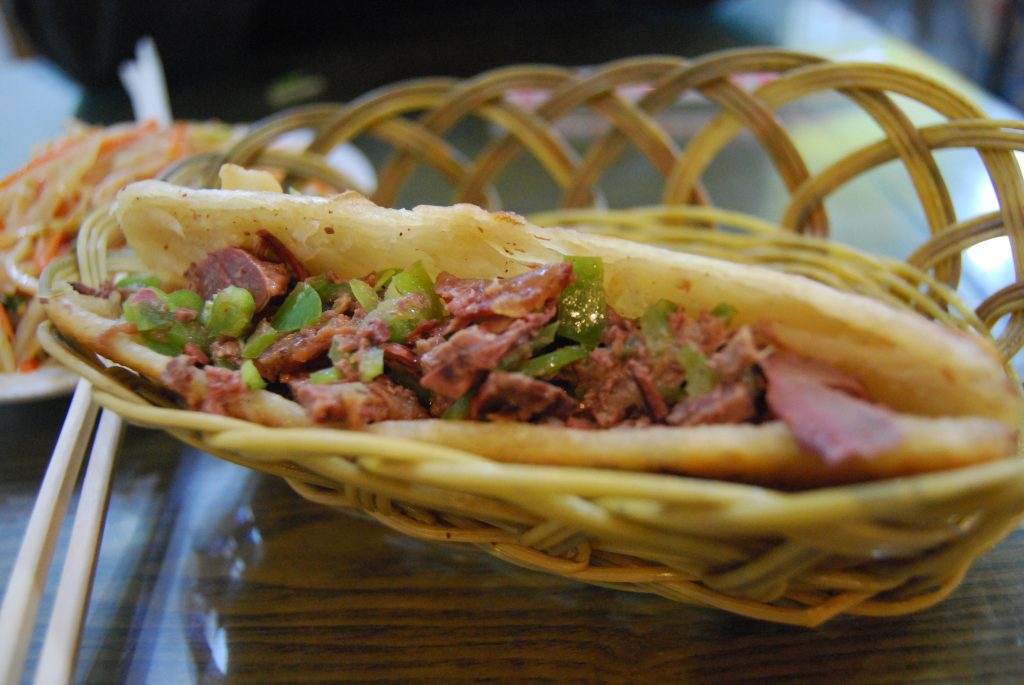
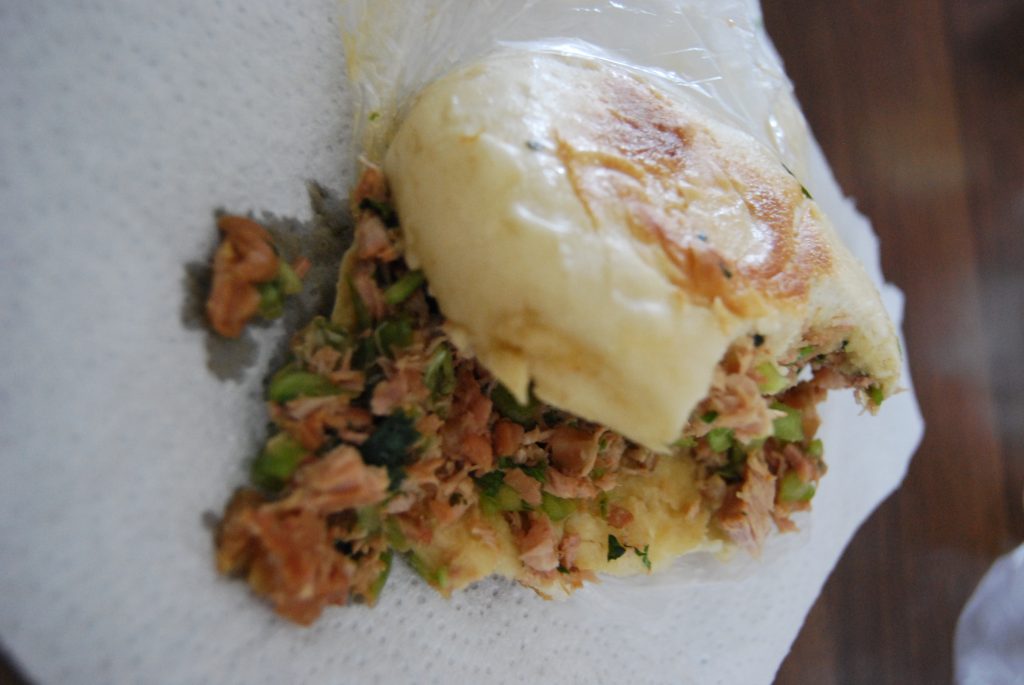
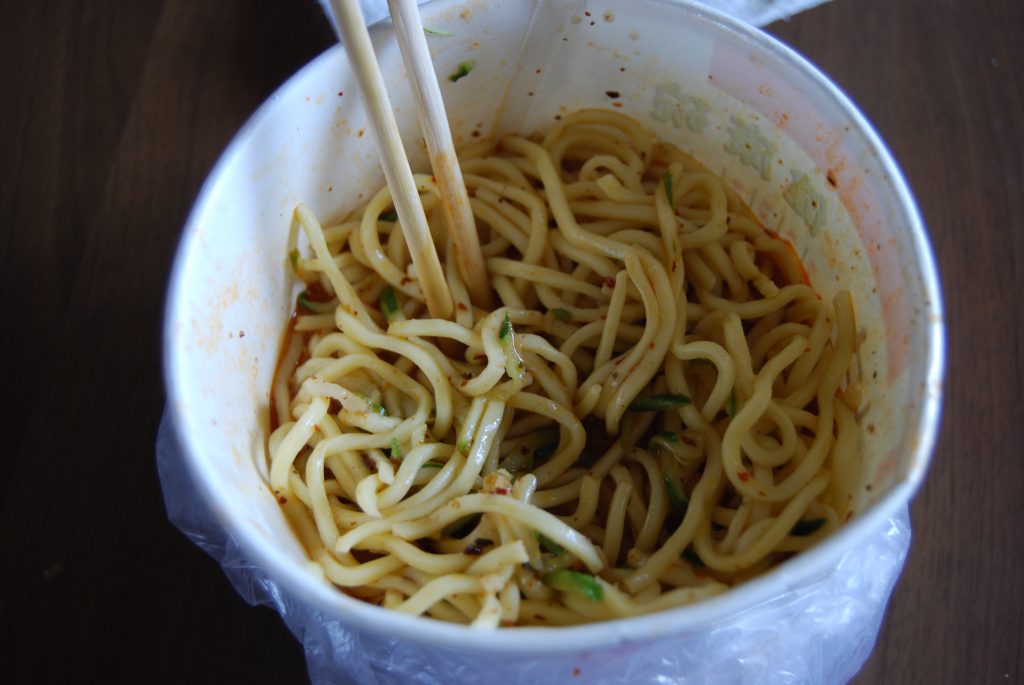

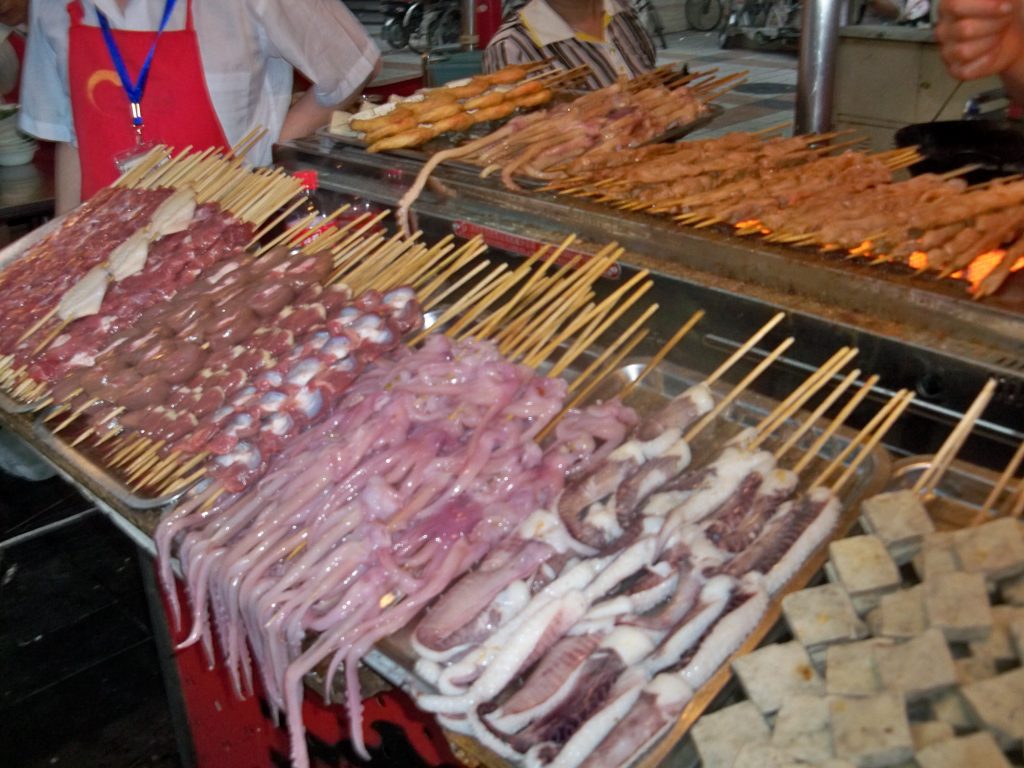
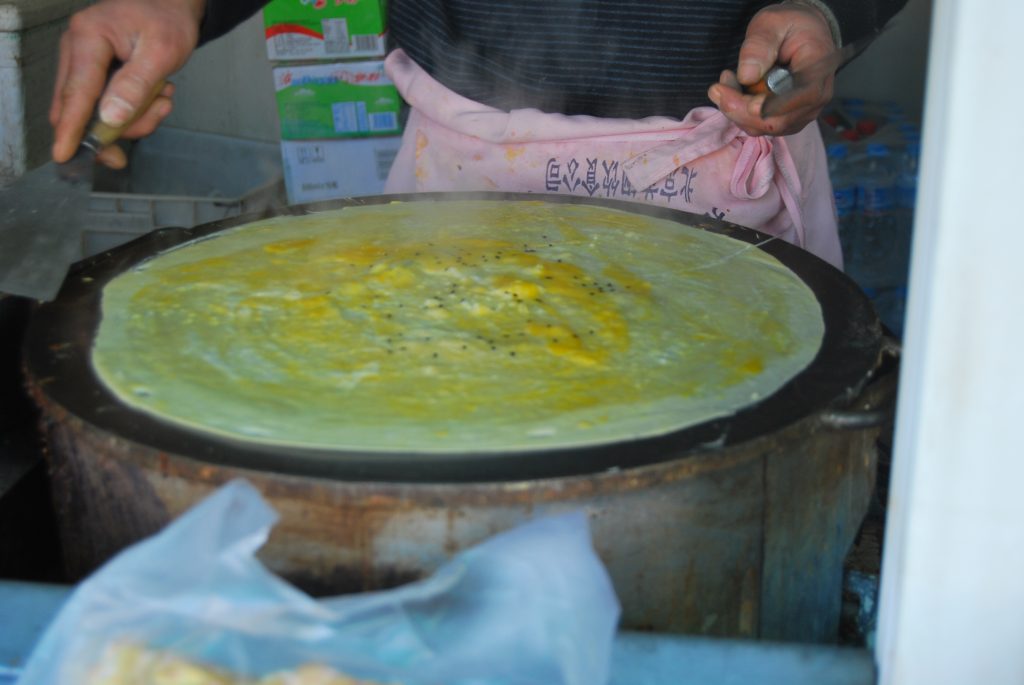
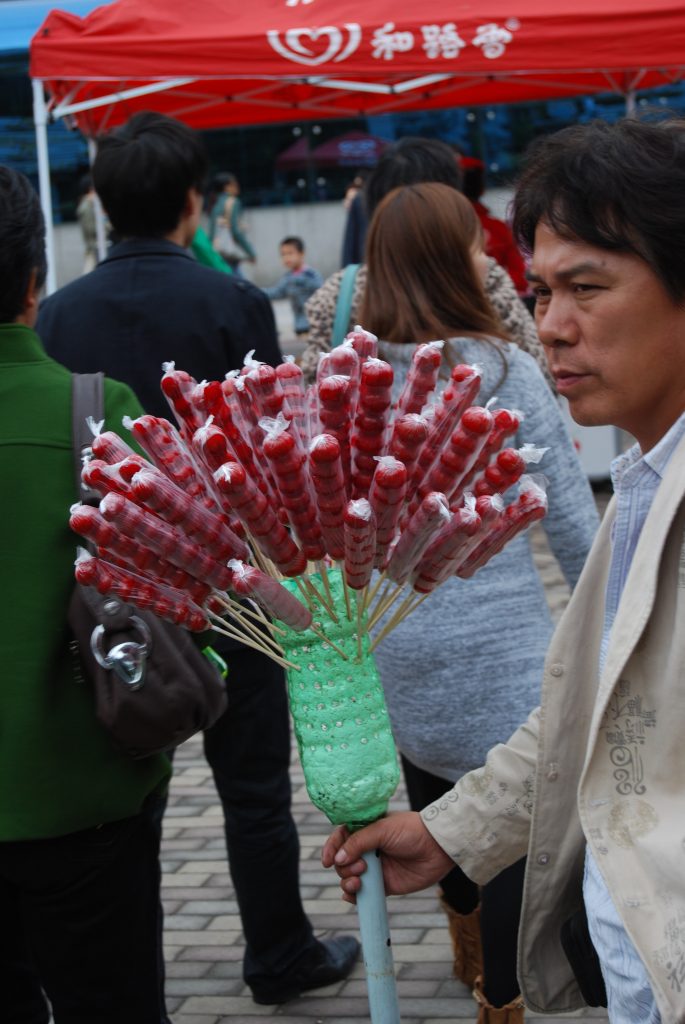


Leave a comment: